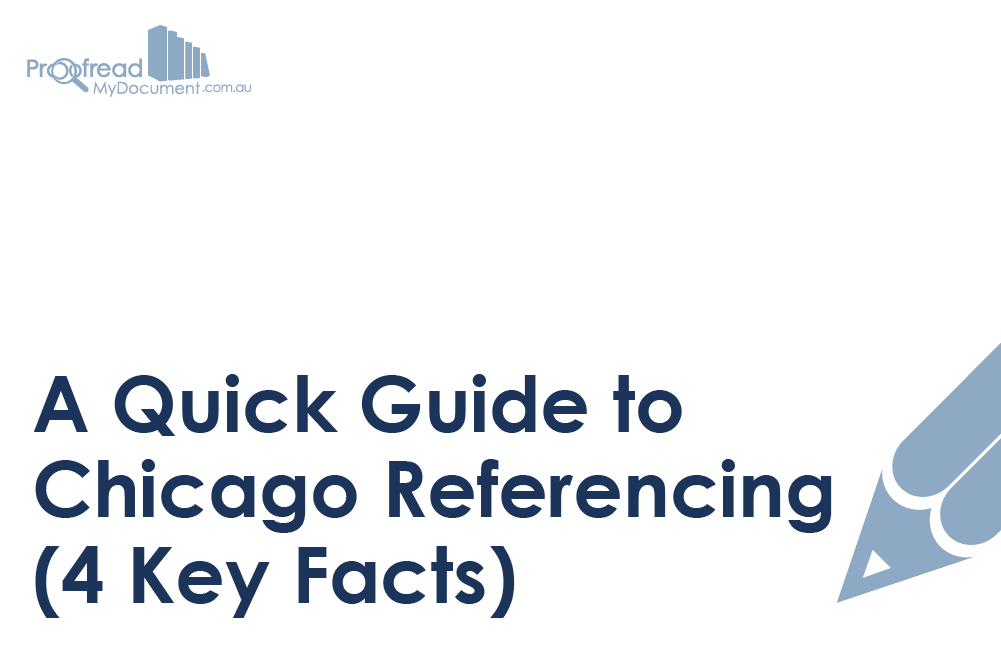Many Australian universities use Chicago referencing, which provides a versatile way to cite sources in academic work. However, it can be quite a confusing system if you’re not used to it. Consequently, if told to use this system, you should make sure you know the basics first. Read on below to find out more.
1. The Style Guide
Chicago referencing is based on the Chicago Manual of Style, published by the University of Chicago Press. Currently on its 17th edition, as well as referencing, this guide provides advice on writing and formatting documents.
However, since it’s designed as a guide to American English, Australian universities usually focus only on the rules for citing sources. Be sure to check whether this is the case at your university.
2. One System, Two Methods
The most important thing to remember with Chicago referencing is that it offers two different citation methods:
- Author–date citations, where you cite sources in brackets in the text.
- A footnote and bibliography system.
And due to this ‘double’ system, it’s crucial to check which one your university prefers before you start writing an essay.
The author–date version uses parenthetical citations in the text. This system is most common in the physical, natural and social sciences:
Moomins usually sleep through the winter (Jansson 1973).
When using footnotes, you cite sources using superscript numbers in the text, with full bibliographic information given in footnotes. This version is more common in the humanities. A footnote citation would look like this:
1. Tove Jansson, Moominland Midwinter (Harmondsworth: Puffin, 1973), 12.
The footnote version also gives you the option of either:
- Using full footnotes without a bibliography
- Using only shortened notes with a bibliography
However, most universities prefer you to use both full notes and a bibliography. For more on the shortened footnote format, see the ‘Repeat Citations in Footnotes’ section below.
Find this useful?
Subscribe to our newsletter and get writing tips from our editors straight to your inbox.

(Photo: Phillip Capper/wikimedia)
3. Reference List Differences
Both versions of Chicago referencing require cited sources to be listed alphabetically by author surname at the end of your document. However, the format for this differs slightly depending on the style you’re using.
With author–date citations, the reference list format is:
Author surname, first name. Year. Title. City of Publication: Publisher.
But when footnotes are used, the year goes at the end:
Author surname, first name. Title. City of Publication: Publisher, Year.
4. Repeat Citations in Footnotes
When referring to the same source more than once, the author–date version of Chicago referencing uses the same format each time (i.e. author’s surname and year of publication in brackets, plus relevant page numbers).
But to save duplicating the publication details every time, the footnote and bibliography version uses a shortened format with just the author’s name and any relevant page numbers. For instance:
1. Tove Jansson, Moominland Midwinter (Harmondsworth: Puffin, 1973), 12.
2. ‘Moominvalley will close on 30th October 2016 and become Moomin Museum’, Moominvalley, accessed 9 November, 2016. http://muumilaakso.tampere.fi/en/moominvalley-will-close-its-doors-on-30th-october-2016/
3. Jansson, 25.
Here, for instance, the first and third citations are for the same source.



